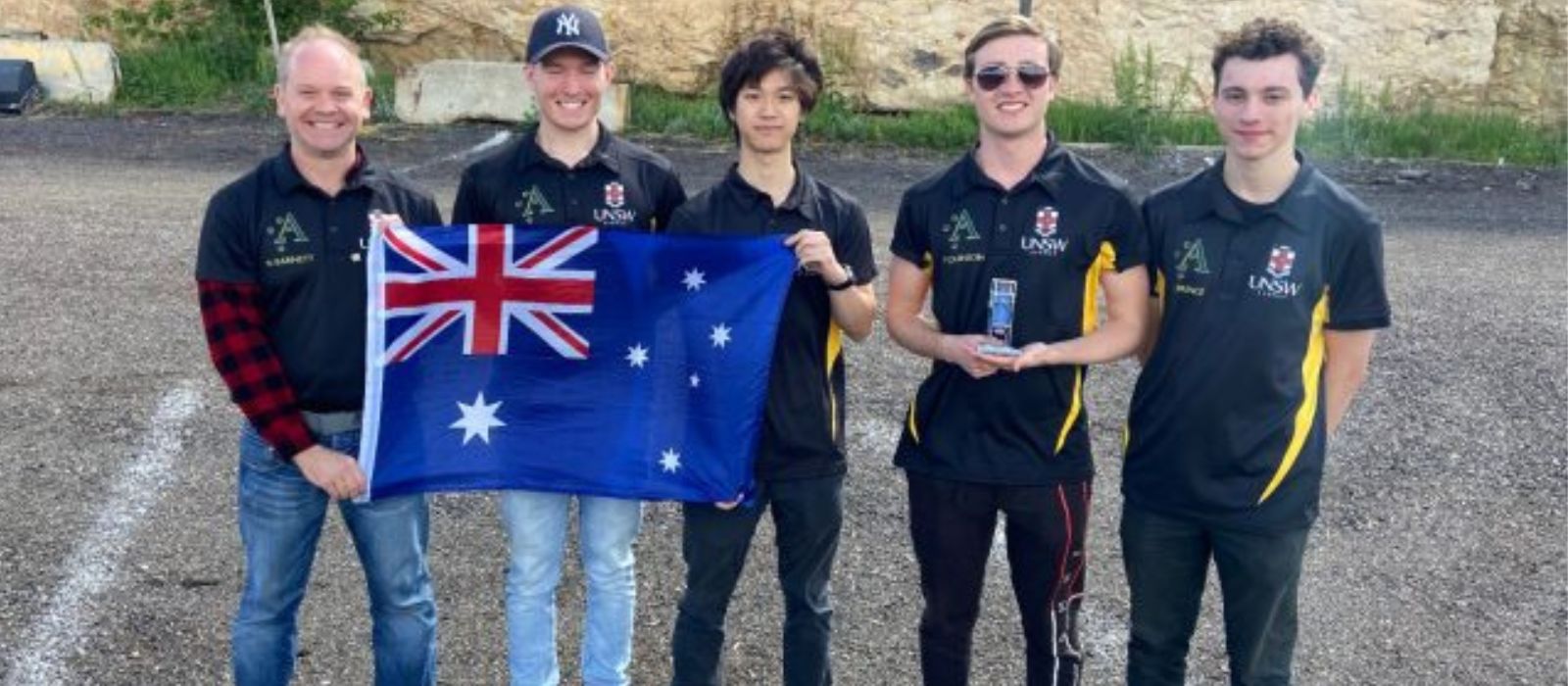Aussienauts land second place in ‘Over the Dusty Moon’ challenge

A team of Australian engineers have placed second in a prestigious international competition designed to advance lunar exploration and space mining technology.
The Aussienauts, a group of students from UNSW Sydney, including mining engineering students, took the runners-up spot in the 'Over the Dusty Moon' challenge held last week at the Colorado School of Mines.
According to the competition website, lunar regolith can be used in construction, mineral processing, and other in situ resource utilisation activities. The goal of the competition was to demonstrate the systems teams from all over the world designed and built for moving lunar dirt, or regolith, around the Moon’s surface. Judging focused on the amount of regolith simulant transported, system mass, energy consumed, dust tolerance and generation, autonomy and overall performance.
The Australian team was led by Nick Barnett AAusIMM, PhD candidate in Space Mining, at UNSW’s School of Minerals and Energy Resources Engineering, and their success provides a platform for further collaboration within the global space and mining industries.
“The success puts Australia and UNSW on the map within the space resources sector. We have made plenty of new connections with people all around the globe, across many different universities and companies, and these connections better equip us to push forward space mining innovations,” says Finn Prince, fourth-year Mining Engineering student.
“It will allow a lot more opportunities for both UNSW and Australia to be more involved in the space and mining industry. Especially the space industry as it is still a developing industry in Australia,” says Justin Fang, second-year Aerospace Engineering student.
The competition
Each team was tasked with building a prototype capable of efficiently transporting lunar regolith between a hopper and a molten regolith electrolysis (MRE) plant, five meters across and three meters up.
The UNSW team’s submission was an Autonomous Slat Conveyance System (ASCS), which was the lightest system in the competition (27 kg) and used the least amount of power (22W/hr). The system was comprised of a top axle with a motor attached to it, and a bottom axle. Slats were wrapped around both axles, creating a loop resembling a conveyor belt. Due to the continuous depositing, the team achieved a delivery rate of 96kg/hr.

The team in action.
“The challenges of moving lunar regolith are complex. The material itself is extremely cold (close to -200C) and ‘sharp’, meaning it easily gets into moving parts – a factor complicated on the Moon by the regolith floating in the low-gravity environment.
Despite a strong start, a hopper butterfly valve jammed open, causing the motor to overload and break down.
“Every competing team had a catastrophic failure during their allocation time. But it was how the teams reacted to these problems that made them successful. From the past two competitions, I have learnt that not everything will go right, and you need to be ready to expect the unexpected,” says Nick Barnett.
“Sufficient testing prior to the competition is very important, to ensure you understand the system and can adapt when things do go wrong on the competition day,” he says.
The team continued to work through the challenges and managed to successfully deliver 16 kg of regolith within the one hour given.
Following two days of intense competition and rigorous evaluation by a panel of judges, which included technologists from Lockheed Martin Space division, the UNSW team secured second place. Team AGH from Poland came in first place.
“I am very proud of the result and proud of the whole team for the work we put into this project. I feel that the result is a good representation of the efforts and passion of all team members,” says Finn Prince.
“This is truly an amazing result and great to see improvement from last year’s competition. The team learnt from previous mistakes and made sure that these were not repeated,” says Nick Barnett.
“The success of the team also shows that there are opportunities available to succeed on an international scale in the space sector. I hope that we can inspire and encourage more people to consider employment opportunities in the space sector. Increased visibility and success of Australians in the sector will hopefully lead to further commercial investment into Australia, generating further growth,” says Nick Barnett.
According to Professor Serkan Saydam FAusIMM, who holds the position of Chair of Mining Engineering and serves as Deputy Director of the Australasian Centre for Space Engineering Research at UNSW, “Our team has been at the forefront of space mining research in Australia. Our approach at UNSW involves applying mining engineering knowledge and research to space, which is unique and arguably world-leading. In 2013, we established the Off-Earth Mining Forum, a bi-annual event that serves as a platform for advancements in this field”.
Professor Saydam expressed great pride in the representation of UNSW by the Aussienauts in a prestigious international competition, and confidence in their future success and receiving future awards.

The team with Paul C Johnson PhD (left), President of the Colorado School of Mines.
The future
The team has been invited for further discussions by the Lockheed judging panel, who saw potential with the design for lunar operations.
The rest of the year, the team will be performing pioneering experiments on lunar regolith which will have real-world applications for missions like NASA’s Artemis program. They have also already started brainstorming improvements and new ideas for next year’s Over the Dusty Moon challenge submission. The team is planning to develop the design of the system further, making it more robust and improving on its weight and efficiency.
“We are excited to compete again next year with a replica of this year's design, but with refinements in multiple areas,” says Justin Fang.